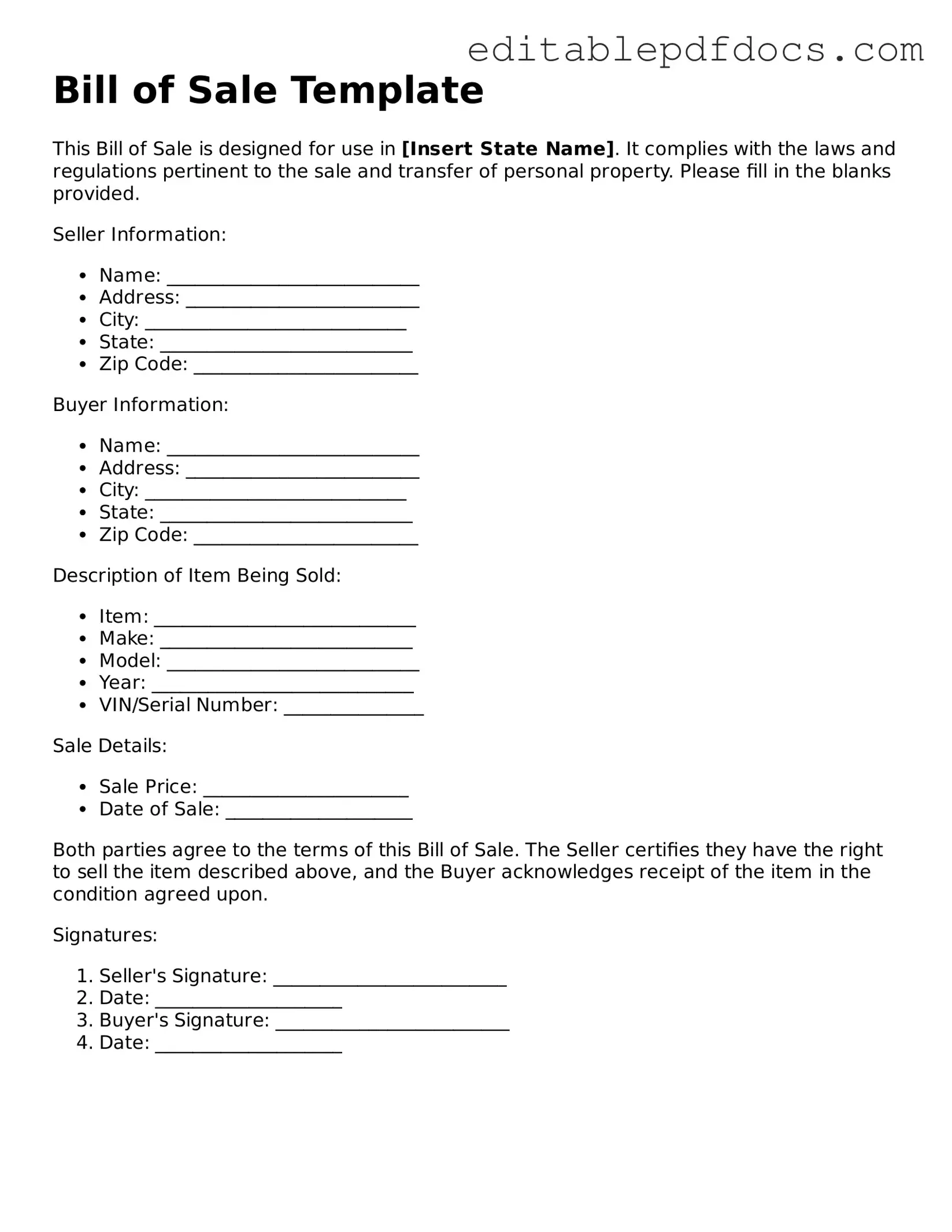Filling out a Bill of Sale form can seem straightforward, but many people make common mistakes that can lead to complications later. One frequent error is failing to include all necessary details about the item being sold. It's crucial to provide a clear description, including make, model, year, and any identifying numbers. Omitting this information can create confusion and disputes in the future.
Another mistake involves not including the purchase price. This is an essential component of the Bill of Sale. Leaving it blank or using vague terms can lead to misunderstandings. Both the buyer and seller should agree on a specific amount to ensure clarity and prevent any potential disputes.
People often forget to include the date of the transaction. This detail is vital for record-keeping and may be required for legal purposes. Without a date, it can be challenging to establish when the sale occurred, which could complicate matters if any issues arise later.
Additionally, signatures are a critical part of the Bill of Sale. Both the buyer and seller must sign the document to validate the transaction. Some individuals neglect this step, thinking that verbal agreements are sufficient. However, a signed Bill of Sale serves as proof of the agreement and protects both parties.
Another common oversight is not providing contact information for both parties. This information is essential for any future correspondence regarding the sale. Without it, reaching out to one another could become a hassle, especially if questions or issues arise after the transaction.
People sometimes use outdated or incorrect templates when filling out the form. Using the most current version is important, as laws and requirements can change. Relying on an old template might lead to missing essential information or including outdated clauses.
Some individuals also fail to check for typos or errors in the document. Simple mistakes can lead to misunderstandings or disputes. Taking the time to review the Bill of Sale carefully before finalizing it can save a lot of trouble later.
Not understanding the implications of the Bill of Sale is another mistake. Some people treat it as just a formality, not realizing that it can serve as a legal document in case of disputes. Understanding its significance can encourage thoroughness and accuracy when completing the form.
Lastly, people may overlook the importance of keeping a copy of the Bill of Sale. After the transaction is complete, both parties should retain a signed copy for their records. This document can be crucial for future reference, especially if there are questions about ownership or the details of the sale.
